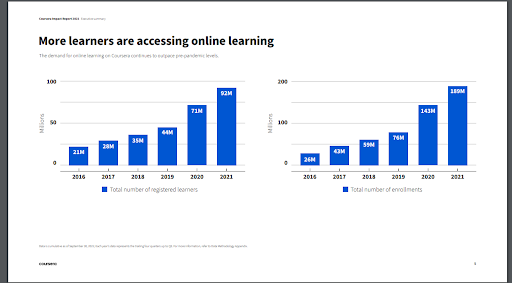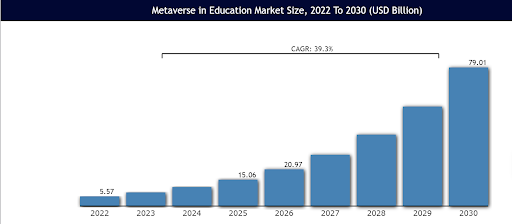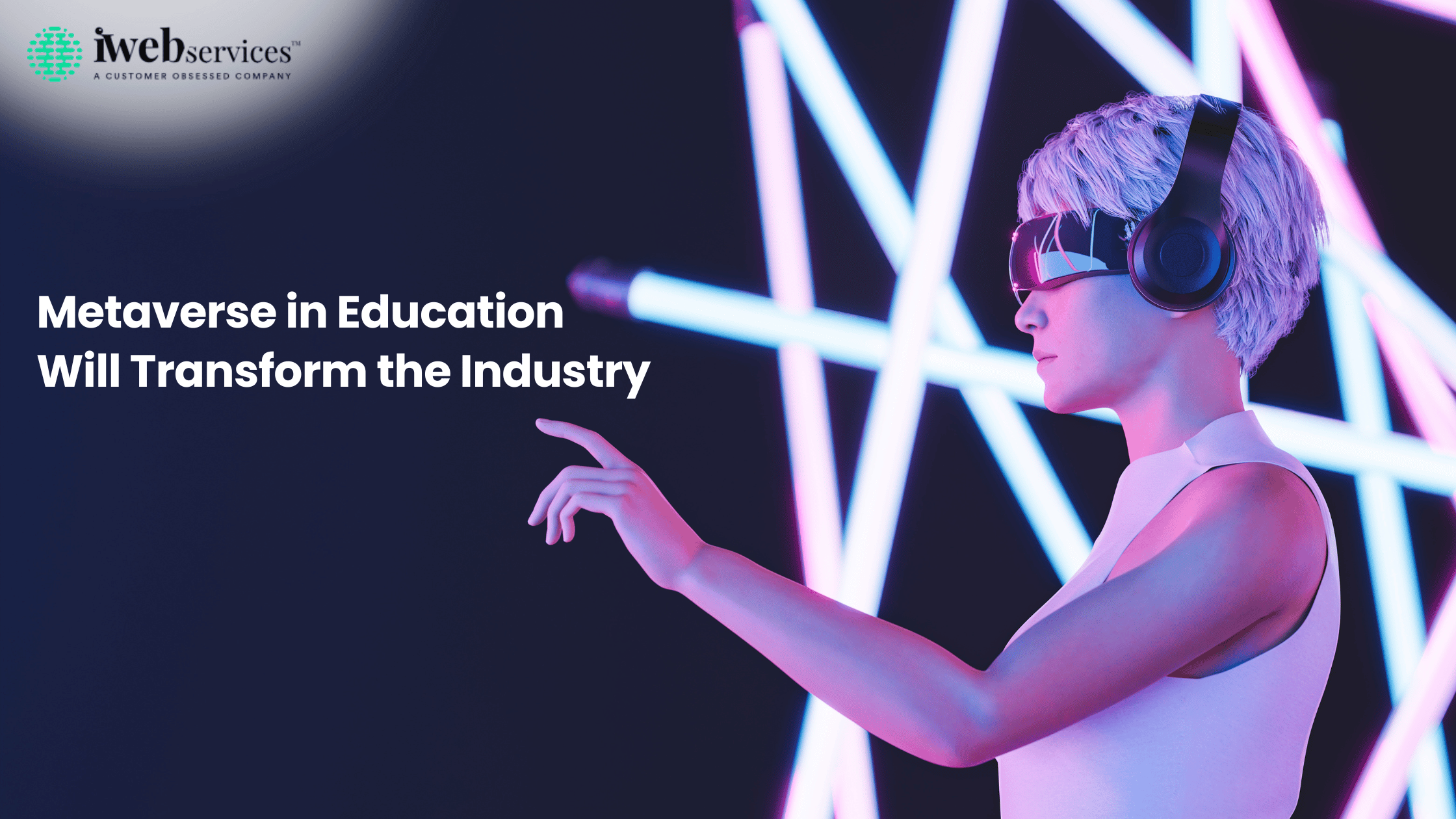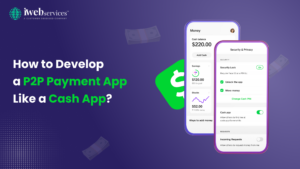The onset of the COVID-19 pandemic was a true game-changer. Undoubtedly, it has forced humanity to rethink how we do things, For example, prior to its occurrence, digital technology was not widely embraced in various sectors, including education.
Though it was there, the uses in the education industry were minimal. Today, the situation has changed, The winds of change are blowing. If we observe the things around us, online learning is taking over education by storm.
In fact, it is offering more access and convenience than ever before. Don’t believe me? Let’s see the incredible statistics from the World Economic Forum 2.
This report reveals that in 2021, over 20 million new learners signed up for online learning, indicating a massive surge in online learning and a shift towards a more digital future in education.

That is only the tip of the iceberg when it comes to the potential impact of digital technology in educational settings. A brand new concept is quickly emerging, and it holds the potential to turn the education landscape on its head – the Metaverse.
Further, in my research, I found that the metaverse in education market worldwide had a worth of USD 5.57 Billion in 2022, and it is estimated to grow at a CAGR of 39.30% during the predicted period, reaching a value of USD 79.01 Billion by 2030.

This means metaverse in the education market is set to experience healthy growth.
But wait, what precisely is it?
Through this blog, we’ll dive into the world of the Metaverse in Education concept –
- What is Metaverse?
- What role does Metaverse in Education have in today’s world?
- What advantages does Metaverse in Education have?
- Metaverse in Education: What’s its application?
Let’s discuss all these one by one.
What is Metaverse?
According to Wikipedia,
”The “metaverse” is a hypothetical iteration of the Internet as a single, universal, and immersive virtual world that is facilitated by the use of virtual reality (VR) and augmented reality (AR) headsets. In colloquial usage, a “metaverse” is a network of 3D virtual worlds focused on social and economic connection.”’
In layman’s words, the metaverse is a whole new experience of a virtual world. However, this is only the start of a new world. We must use various equipment, such as PCs or VR headsets, to join this realm.
Moving ahead, it can be described as a location where users can engage with one another and their surroundings in a 3D world. It is fundamentally a fusion of the physical and digital worlds.
However, for this, users have to develop ‘Avatars’ to represent themselves and traverse through digital environments. Users can communicate through text or voice chats.
Unlike conventional games or social media, the metaverse doesn’t offer preset goals or aims. Instead, each user is free to choose how they will spend their time there.
What role does Metaverse in Education have in today’s world?
Well, to know this, there is nothing better than to take a look at the current state of education + the metaverse. So, quickly, dive into some of the statistics that I have collected from various sources.
- North America will have a 43.10% market share in 2021 due to the use of metaverse platforms to give virtual college tours and greater investment by important companies in producing educational games for schools and universities.

- Manish Maheshwari, the ex-CEO of Twitter India, has revealed that his company Invat Metaversity secured funding of USD 5 million in February 2022. The newly acquired funds will be utilized to create an educational metaverse and expand it globally. Invact Metaversity is a platform that combines education with Web 3.0 and offers training programs.
Ultimately, the metaverse in education will transform the industry. But to make this possible, you need IT experts. You can either hire an in-house metaverse development team or hire remote developers for the same. Here our next question is how.
What advantages does metaverse in education have?
The word “metaverse” was actually first introduced in Neal Stephenson’s novel “Snow Crash” way back in 1992!
But now, it is a new buzzword that has been making headlines in the news and technology circles. There are various use cases of it that are rolling out across industries. For the education industry, it too holds numerous benefits. Let’s see some of the advantages of a metaverse in education:
- Engaging and Interactive Learning
Over the past two decades, digital technologies have transformed the landscape of education. In classrooms across the globe, iPads and other tablets are now commonplace tools used to enhance the learning experience.
However, 2D technologies like tablets and laptops have their limitations. It can be difficult to keep students engaged for lengthy periods, and the learning experience can feel somewhat detached from reality.
But, with the help of metaverse development, you have more opportunities to create a truly interactive and engaging learning experience.
For example, imagine a history class that takes place in the metaverse. Students could don VR headsets and be transported to ancient Rome. Incredible, isn’t it? Yes, with this they can explore the streets, architecture, and culture of the time period.
They could witness historical events in real-time, interact with virtual characters, and experience history like never before.
Another example we can take it as a biology class where students could explore the inner workings of cells and organisms in a virtual 3D environment. They could even perform:
- virtual experiments,
- dissect virtual organisms,
- and gain a deeper understanding of the subject matter in a safe and interactive way.
Not just, imagine letting your student learn about solar systems in the virtual space.
Immersive learning is more effective than traditional techniques because it fosters greater engagement and participation. Students are active participants in the learning process rather than passive observers. They are more likely to remember and use information in real-world circumstances.
- Accessible Education
One of the greatest benefits of the metaverse in education is that it makes learning more accessible. Students who were previously restricted by their location, mobility, or financial resources can now attend high-quality education from anywhere in the world.
One inspiring example of this is a school that has built a digital version of the Globe Theater, the iconic London venue where Shakespeare’s plays were first performed. With the help of cutting-edge technology, students can now step into the Globe Theater and experience the same immersive environment that audiences did 400 years ago.
Even more impressively, the metaverse allows for education to reach communities that have traditionally been underserved or overlooked. Schools in rural settings, for example, may not have the same resources as schools in urban or suburban areas.
Therefore, the metaverse provides a way for these students. I mean, it can establish a space where students have access to the same quality education as their peers in other areas. As a result, this serves to bridge the educational divide and guarantee that all kids have the opportunity to learn and achieve.
- Customized Learning
”Understanding a concept is not always easy, and each student learns at their own pace.’
Saying that, with the metaverse in the education field, you have the flexibility to customize the material to meet the unique needs of each learner.
For example, in a virtual environment, a student can practice a skill or concept multiple times without feeling frustrated or pressured to keep up with their peers. The student can also learn at their own pace, pausing or rewinding a lesson as needed.
It also enables teachers to create customized learning paths for each student based on their individual strengths and weaknesses. It is impossible for a teacher to deliver one-on-one attention to each student in a regular classroom setting.
However, with the metaverse, the teacher can provide personalized attention and guidance to each student in a virtual setting.
- Letting students learn concepts by playing game
Another effective method for keeping students engaged and focused on their studies is to incorporate a competitive spirit into the learning process. What better method to accomplish this than through gamification?
By turning education into a game, learners are more likely to stay engaged, excited, and eager to continue their studies.
Gamification in the metaverse can also help learners set goals and track their progress. By adding points, badges, and leaderboards, learners can see their progress and be motivated to continue pushing forward.
Besides this, group projects and collaborative activities in the metaverse can help learners build teamwork and communication skills, while also creating a sense of community and support.
- Real-time Application
It is not wrong to say, the metaverse enables students to explore different career paths and gain hands-on experience in industries that they are interested in pursuing.
With the metaverse, students can have access to virtual simulations that replicate real-life scenarios. They can have access to a variety of virtual workspaces where they can gain insight into what it’s like to work in different industries and understand the skills required for various jobs.
The application of the metaverse in education creates an opportunity for students to gain practical skills, which is essential in the modern job market.
For instance, in a medical school, students can practice surgical procedures using virtual reality simulators, which provide a safe and low-risk environment for them to learn.
Metaverse in education: applications
Here are some of the ways the metaverse can be used in edTech:
- Virtual classrooms
In virtual classrooms, educators can use various tools such as whiteboards and presentations to teach their students effectively. These tools make lessons interactive and engaging, ensuring that learners remain attentive throughout the session.
Besides that, educators can personalize their teaching approaches based on individual student needs. This not ends here. Virtual classrooms also promote collaboration among learners through group projects and discussions. This feature is especially beneficial for shy or introverted students who may find it challenging to participate actively in physical classroom settings.
- Virtual campus activities
Virtual campus activities are one of the most exciting and innovative applications of the metaverse in edTech.
With this users can attend meetings, discuss ideas, plan events, and share resources through online platforms designed for each club.
Sports teams are another significant aspect of virtual campus life. Students can gather together to play competitive games or practice drills in simulated environments that replicate real-world stadiums or fields.
Social events such as dances or parties are also possible in a virtual setting – creating an immersive experience where everyone feels like they’re truly there. These types of events promote community building among students who might not have had access to them otherwise due to geographical barriers.
- Practical learning
The metaverse has the potential to revolutionize practical learning by providing students with immersive experiences that simulate real-life scenarios. This means learners can practice skills, make mistakes and learn from them in a safe environment without causing any harm or damage.
For instance, engineering students who want to become mobile app developers can perform mobile app designing and test prototypes using computer simulations before building physical models.
What are the features of a metaverse in education?
- One of the significant features of a metaverse is the time and location flexibility it offers to learners. Unlike traditional classrooms, learners have access to the platform at any time from anywhere globally. This feature allows them to balance their academic pursuits with other commitments effectively.
- Another essential feature of a metaverse is learner identity, which means that students can choose avatars or digital representations of themselves while engaging with others on the platform. This enhances engagement by making it easier for shy students to participate more actively.
- The interaction between learners in a metaverse is also unique compared to traditional forms of learning. The platform enables collaboration among peers through communication tools such as video conferencing, chat rooms, and discussion forums.
- Learning scenarios are another vital aspect of this technology as they allow educators to create diverse environments based on specific needs or individual student interests. For example, simulation-based games can be developed for science experiments or historical events allowing students increased engagement.
- Assessment methods are transformed in a metaverse environment since teachers have access to real-time data tracking progress towards goals using gamification elements like leaderboards and badges instead of traditional tests alone.
Metaverse in Education: Wrap up!
To sum up, the metaverse is a powerful tool that can enhance education in numerous ways. It offers students and teachers alike the opportunity to engage with each other in immersive and interactive learning environments, breaking down traditional barriers of distance and access.
By leveraging the power of mobile apps, software, virtual reality, and augmented reality technologies, educators can create educational experiences that are far more engaging than those offered by traditional textbooks or lectures. Besides, being able to connect with peers from around the world provides students with unique perspectives on global issues.
But perhaps most importantly, harnessing the potential of the metaverse enables us to build a more equitable education system. In that, an eLearning App Development Company who are experts in Metaverse technology can help to transform your vision into reality.
 April 28, 2023
April 28, 2023







